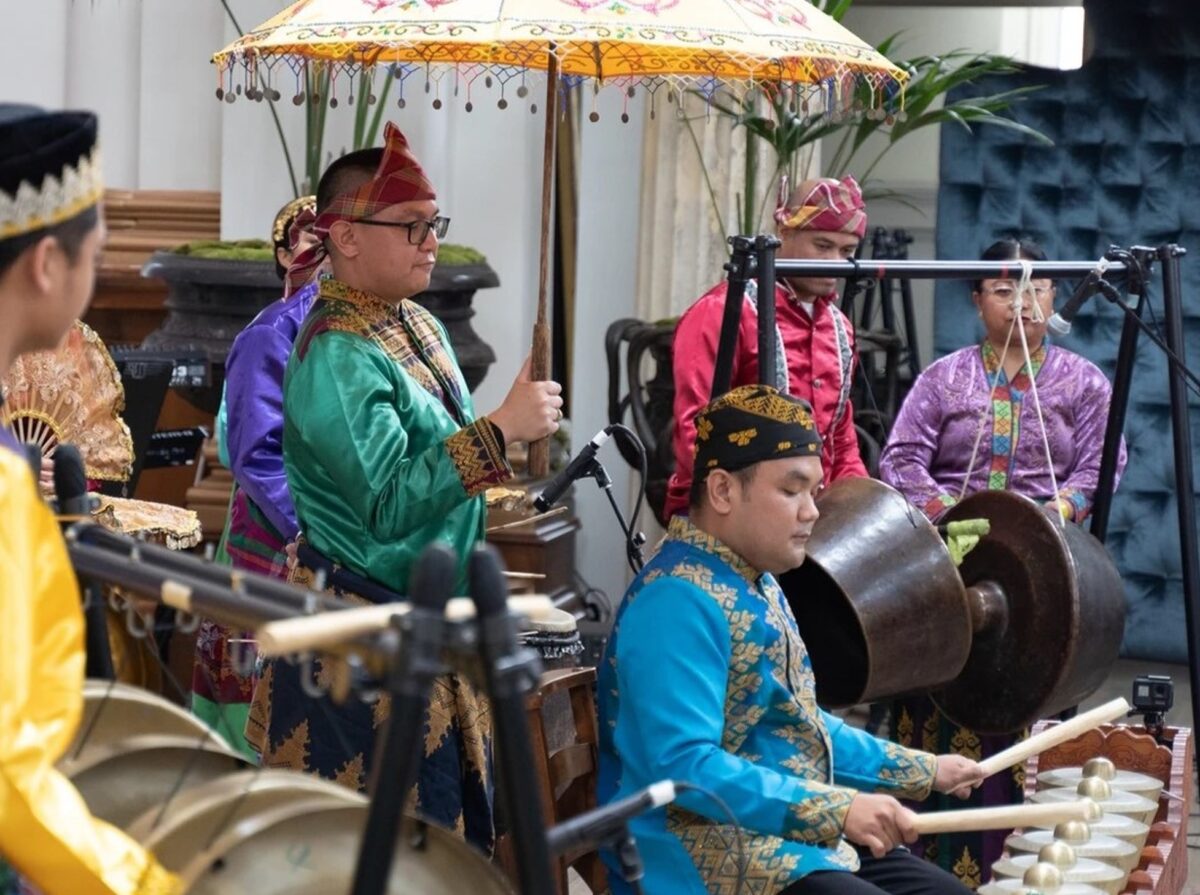Here’s where to experience Kulintang, indigenous music this month

House of Gongs has lined up kulintang and indigenous music performances this month in the Bay Area and Hawaii. CONTRIBUTED
SAN FRANCISCO — Have you heard any indigenous and traditional Filipino music performed live lately?
Filipino Americans interested in learning more about and enjoying these different kinds of music will be glad to know that there are several shows this month that they can attend.
Well, in the Bay Area and in Hawaii, at least. But if you are not from these areas and would like these kinds of activities to come to your city or state, now you will know whom to contact.
This series of activities under the umbrella title “Uni at Ugat” is organized by House of Gongs, a group founded by Lydia Querian and her husband Ron, which focuses on Philippine tribal music and instruments.
“‘Uni at Ugat’ mean ‘sounds and roots’ in Manguindanao and Tagalog. House of Gongs is a grassroots movement that honors tradition and fosters innovation in music and arts,” Querian says.
“By encouraging artists to integrate indigenous knowledge into their creative expressions, House of Gongs aims to bridge cultural gaps and support personal growth.”
Rhythms
Gongs won’t be the only kinds of instruments that will be involved in these performances. According to Querian, “kulintang music is more than just hitting gongs, it’s based on traditional chanting, vocal music and boat-lute music.”
“It is storytelling, healing and a celebratory art form. The melodic sounds and patterns in the music reflect years of passed down voices and oral history.”
On July 23 at the Oakland Asian Cultural Center, “Rhythms of Mindanao” will showcase the music and the art of indigenous Philippine master artists and culture bearers will be co-presented with arts organization Kularts.
Featured performers include Talaandig artists Balugto and Waway, Maguindanaon artists Sata Egal Abdullah and Farid Guinomla, and T’boli artist Joel Ganlal.
“Many ethnic tribes in the Philippines play the kulintang, each with its own unique instrumental composition.”
Geography and rhythm
Then it is off to Hawaii for “Uni at Ugat: Gongs of the River” on July 25. This unique experience will feature the music of renowned Maguindanaon artists Sata Abdullah and Farid Guinomla from Cotabato City, Philippines.
Querian explains that geography influences the way kulintang is played. “Ilod are downstream Pulangi River in Maguindanao and laya are upstream,” she says.
Sata Abdullah plays ilod kulintangan. “The rhythms in ilod style are typically more structured and have a steady tempo. This can reflect the more reserved nature of the region’s cultural practices.”
Farid Guinomla, in contrast, plays laya kulintangan. “While the laya style rhythms are often more fluid, faster and dynamic, with varying tempos that can change within a piece. This reflects the region’s more expressive cultural practices.”
Its second edition of “Gongs of the River” will be on July 30, with workshops and music performances by Joel Ganlal of the T’boli and Waway and Balugto of the Talaandig.
New wave
Behind the scenes, House of Gongs is prepping the next wave of kulintang performers. It is currently conducting a music camp this month where a batch of musicians are learning to integrate Filipino gongs and indigenous musical instruments into their repertoire.
“Through this camp, we are providing them access to master artists from the Philippines, Filipino American experts from the music industry and from Hollywood.”
“Our inaugural camp is an essential part of House of Gong’s programming. We want to encourage artists to present new works at our next Gongsters Paradise Kulintang festival, which is the only kulintang festival in North America.”
Visit houseofgongs.com or email thehouseofgongs@gmail.com.
Walter Ang is the author of Barangay to Broadway: Filipino American Theater. Available at Amazon, Bookshop and other online booksellers.

